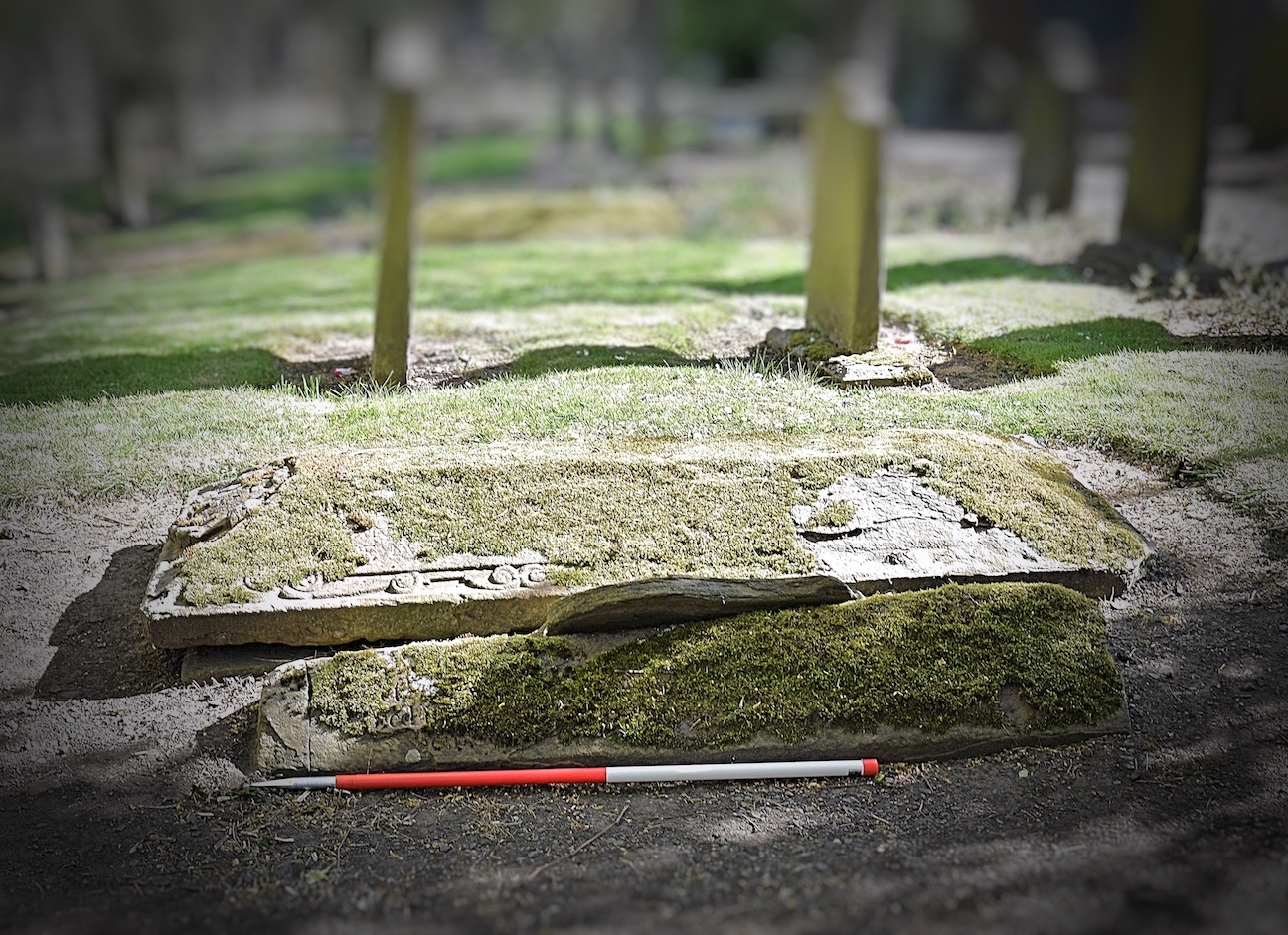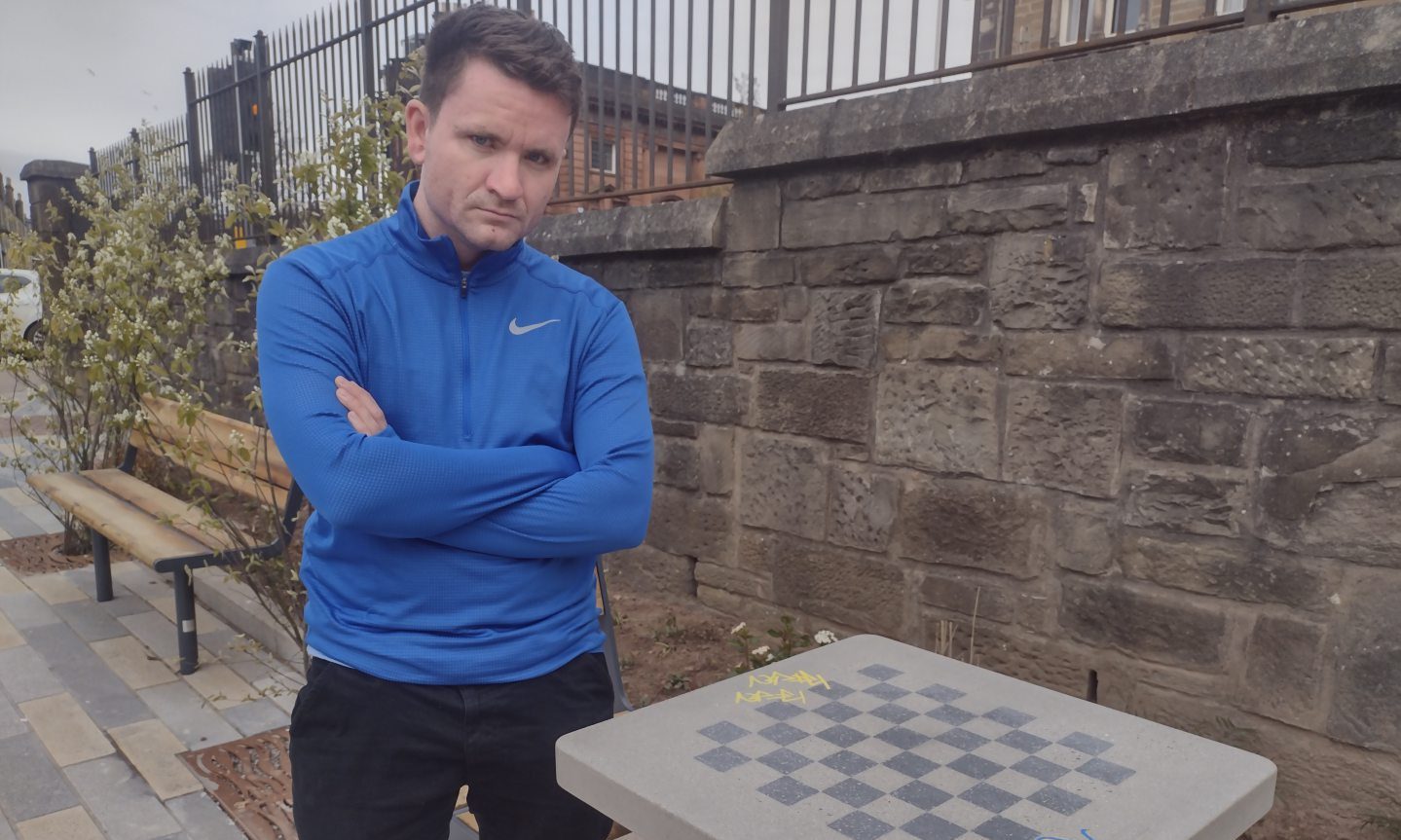A rare medieval burial marker has been discovered at a Dundee graveyard, making it the oldest monument at the cemetery.
The stone, thought to be from the 12th or 13th century, was found on Sunday in the north-west corner of the Howff.
Before the discovery the oldest monument in the 500-year-old cemetery dated back to 1577.
The stone was an accidental find, uncovered while Dundee Howff Conservation Group volunteers were carrying out digital map of the graveyard along with archaeologist Dr Oliver O’Grady from OJT Heritage.
Now local conservationists are hoping that the find will help cement the Howff’s “hidden gem” status as part of Scotland’s Year of History, Heritage and Archaeology 2017.
The site is currently among 28 nominees in the running to be crowned one of the half dozen of Scotland’s most spectacular hidden gems as part of Dig It! 2017, the year-long celebration of archaeology.
Simon Goulding, chair of the Dundee Howff Conservation Group, said: “When we set out to produce the most detailed map of the site since 1832, we never expected to make such a discovery.
“Our aim now is to complete an archaeological dig to ascertain its overall condition, have a conservation report compiled and get more votes before the end of July to make the Howff officially one of Scotland’s six spectacular hidden gems.”
The discovery was made when Dr O’Grady spotted a moss covered stone which appeared to be medieval.
He said: “It’s been an absolute pleasure helping Simon and the group’s dedicated team to map the Howff’s important collection of burial monuments.
“Finding the medieval stone was an amazing added surprise and is a significant discovery for Dundee’s archaeological heritage.
“It is a type known as a coped stone and studying it should help uncover more about the Howff’s hidden medieval past, so I’m really pleased for the group.”
There are only around 90 examples of this type of medieval burial stone from Scotland.
Dundee has a small collection at St Mary’s church in the old town centre, but this is a first for the Howff.
Dr O’Grady added: “The stone is currently in a poor condition, so I am now supporting the group to find the best way to conserve and present the stone for future generations to enjoy.”
The Howff is an A-listed site in the heart of Dundee.
Home to some of the most ornate and detailed carvings in the UK, it charts around three centuries of life and death in Dundee.
The overcrowded cemetery was closed in 1860 but three further burials were allowed with permission from the Secretary of State.
The last was that of George Duncan MP for Dundee who was buried in 1878.
‘Scotland in Six – Hidden Gems’ voting is taking place on the Dig It! 2017 Facebook page, with one “like” equalling one vote.
To vote for your favourites, visit the Dig It! 2017 Facebook page.










